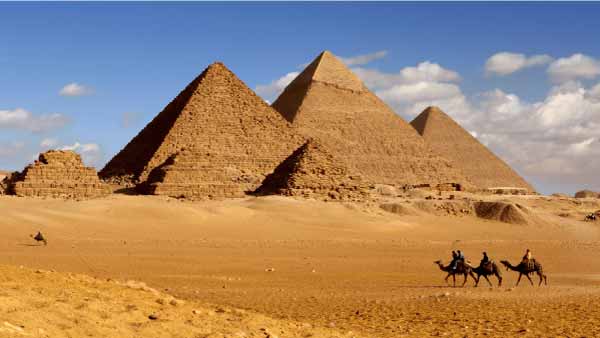Roman civilization developed on the Italian peninsula and spread along the Mediterranean, becoming one of the most influential civilizations in Western history. It was founded in 753 BC and lasted until the fall of the Western Roman Empire in 476 AD.
Roman culture was characterized by its focus on law and order, as well as engineering and architecture. The Romans were famous for their republican system of government, in which citizens elected their leaders and participated in decision-making through assemblies. They also established a legal system that has been a lasting influence on Western law.
The Roman Empire was one of the greatest and most enduring in history. During its heyday, it expanded from Britain to the Middle East and North Africa. Rome established a system of communications and transportation that facilitated trade and the expansion of knowledge. In addition, the Romans built great public works, such as aqueducts, bridges, and roads, which can still be seen today.
As for religion, the Romans were polytheists and worshipped a wide variety of gods and goddesses. They also adopted and adapted Greek religion, which led to the rise of Roman mythology.
In short, Roman civilization left a lasting legacy in Western culture. His achievements in architecture, engineering, law, politics, and religion have influenced Western culture and society to this day.
Other Achievements
Roman civilization had many significant achievements that had a lasting impact on Western culture and society. Some of the major achievements of the Romans include:
Legal system: The Romans developed a legal system that has been a lasting influence on Western law. Roman law was based on the idea that all people have rights and should be protected. The Romans also created the concept of the presumption of innocence and the notion that a person should be judged by his actions and not by his social status.
Architecture and engineering: The Romans were experts in construction and created many impressive buildings and structures that can still be seen today. These include the Colosseum, the Pantheon and the Aqueduct of Segovia. They also developed advanced construction and engineering techniques, such as the use of arch and vault.
Politics: The Romans established a republican system of government in which citizens could choose their leaders and participate in decision-making. They also created a system of laws and rules that applied to all citizens equally.
Communications and transportation: The Romans established a system of communications and transportation that facilitated trade and the expansion of knowledge. They created a network of roads and bridges that allowed for the rapid and efficient movement of people and goods.
Art and literature: The Romans made important contributions to art and literature. His sculptures, mosaics and frescoes are renowned for their beauty and realism. They also wrote great literary works such as Virgil’s Aeneid and Ovid’s Metamorphoses.
Technology: The Romans were innovators in many areas of technology. They developed advanced war machines, such as the chariot and catapult. They also created agricultural tools and farming techniques that improved food production.
In short, the achievements of the Romans in areas such as law, architecture, politics, communications, and technology have left a lasting legacy in Western culture and society.
Religion
Roman religion was polytheistic, meaning they worshipped many gods and goddesses. Roman religion was based on the belief in the existence of divinities that influenced people’s lives and the world in general. These gods and goddesses represented different aspects of life and nature, such as war, love, wisdom, agriculture, hunting, and fertility.
The Romans believed that gods and goddesses needed to be worshipped and propitiated to ensure goodwill and divine favor. To worship the gods, temples were built and animal sacrifices were performed. They also believed in auspices and omens, which were signs from the gods about the future and were interpreted through augurs.
Roman religion was influenced by other religions of the region, especially Greek religion, and many Roman gods and goddesses were adopted from Greek mythology. Some of the most important gods and goddesses of Roman religion include Jupiter, the king of the gods; Juno, his wife and goddess of marriage; Minerva, the goddess of wisdom and craftsmanship; Mars, the god of war; Venus, the goddess of love and beauty; and Neptune, the god of the sea.
In the fourth century A.D., Emperor Constantine made Christianity the official religion of the Roman Empire. As Christianity gained strength, the Roman religion lost followers and eventually disappeared as the dominant religion in the region.
Works of art of the Roman Civilization
Roman civilization produced a wide variety of works of art, including sculptures, frescoes, mosaics, metal artifacts, glass, ceramics, and textiles. Some of the most notable works of art from Roman times include:
Sculptures: Roman sculpture was characterized by its realism and detail. Some of the most famous sculptures include Belvedere’s Apollo, the Venus de Milo, and the Laocoön and his sons.
Frescoes: The Romans decorated its walls with frescoes depicting mythological scenes, everyday life, landscapes, and hunting scenes. The frescoes of Pompeii are some of the best preserved examples.
Mosaics: The Romans created stone and glass mosaics depicting decorative scenes and patterns. Mosaics were common on floors and walls, and some of the most impressive include the Lion Mosaic at the Archaeological Museum of Naples.
Metal artifacts: The Romans were known for their skill in producing metal objects, including statuettes, jewelry, and weapons. Some notable examples include the equestrian statue of Marcus Aurelius and the breastplate of Augustus.
Glass: The Romans created high-quality glass and produced objects such as vessels, vases and bottles with embossed details and with different shapes and colors.
Textiles: The Romans produced fabrics and tapestries with intricate patterns and designs that often depicted mythological scenes.
In short, Roman artworks span a wide variety of forms and mediums, and many of them are among the most impressive examples of creativity and artistic skill of the time.
Roman Civilization Writing
Roman writing developed from the Etruscan alphabet and became one of the most influential writing systems in history. The Romans adopted the Etruscan alphabet and adapted it, adding letters and changing the shape of some letters to better reflect the sounds of Latin, the language spoken in the Roman Empire.
The Roman alphabet consisted of 23 letters, which were written in ink on parchments and papyri. Roman writing was used for a variety of purposes, including personal communication, official correspondence, literature, and legal documents.
One of the most important legacies of Roman writing is the creation of uppercase and lowercase letters, which are still used today in many writing systems. The Roman script also influenced the development of writing in modern languages such as Spanish, French, English and Italian.
Roman literature is one of the most important in history. Roman literature was divided into two main periods: classical Latin literature, which included authors such as Virgil, Ovid, and Cicero, and late Latin literature, which included authors such as St. Augustine and Boethius.
Some of the most important works of Roman literature include Virgil’s Aeneid, Ovid’s Metamorphoses, Cicero’s Discourses, and St. Augustine’s Confessions. Roman literature encompassed a variety of genres, including poetry, philosophy, theater, history, and rhetoric.


